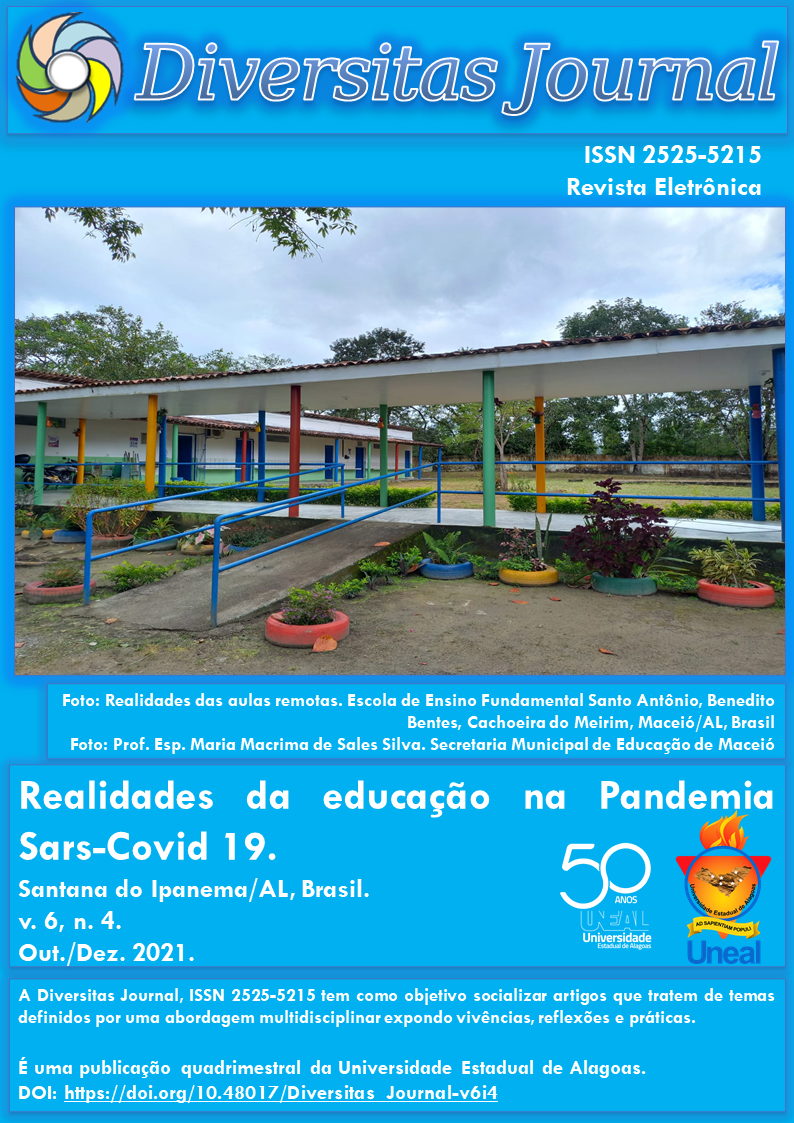Occurrence of tetranychidae mites in desert rose
Resumen
The desert rose, Adenium obesum, an apocynacea native to regions of Africa and the Arabian Peninsula is widely cultivated throughout the world for its ornamental and medicinal values. In Brazil there is a growing interest in the ornamental attributes of A. obesum, which leads to the interest of the scientific community in solving problems that may accompany the cultivation of this plant. Some studies on the forms of management, nutrition and irrigation have been carried out, however, studies that aim to understand diseases and pests that affect the desert rose are still scarce. This study aimed to report the first occurrence of mites of the family Tetranychidae causing damage to desert rose cultivated in a greenhouse in the state of Paraíba, Brazil. Sixty specimens of desert rose were monitored between December 2019 and July 2020 in a greenhouse in the biosciences department of the Federal University of Paraíba. All plants had injuries and damage caused by the mite. The main damages were necrosis, deformation of the edges, closing of the leaves along the central vein and yellowing with total dryness and falling of the leaves. Formation of webs over leaves and flowers. It was concluded that the mites of the family Tetranychidae cause damage to desert roses that can damage their commercial value.
Métricas
Citas
BAKER, E.W.; TUTTLE, D.M.. 1994. A guide to the spider mites (Tetranychidae) of the United States. Indira Publishing House. 347p.
COLOMBO, R.C. et al.. 2018. substrates and irrigation levels for growing desert rose in pots. Ciencia e Agrotecnologia, v. 42, n. 1, p. 69–79,
MARCOS, B. CRISTIANO, J. ARIOLI, R. M. J.. 2015. Manejo de pragas e doenças. 1. ed. Brasilia: Embrapa. v. 4
MCBRIDE, K.M. et al. 2014. Mineral nutrition of adenium obesum ‘red’. Hortscience, v. 49, n. 12, p. 1518–1522.
OYEN, L.P.A. 2008. Adenium obesum (Forssk.) Roem. & Schult. In: Schmelzer GH, Gurib Fakim A (eds). Plant resources of tropical Africa, medicinal plants, Backhuys. Wageningen. p. 46-49
PLAIZIER, A.C. 1980. A revision of Adenium Roem. and Schult. and of Diplorhynchus Welw. Ex Fic. & Hiern (Apocynaceae). Wageningen: H. Veenman & Zonen BV. 40 p.
PRITCHARD, E. & BAKER, E.W. 1955 A revision of the spider mite family Tetranychidae. Pacific Coast Entomological Society Memoirs, 2, 1–472
RAPINI, A. 2000. Sistemática: Estudos em Asclepiadoideae (Apocynaceae) da Cadeia do Espinhaço de Minas Gerais. (Tese de doutorado) - Instituto de Biociências, Universidade de São Paulo, São Paulo, 2000. p. 29-31. doi:10.11606/T.41.2000.tde-12122001-085018. Acesso em: 07 ago. 2020
ROGGIA, S. 2007 Ácaros tetraniquideos (prostigmata:tetranychidae) associados à soja no Rio grande do Sul: Ocorrência, identificação de espécies e efeito de cultivares e de plantas daninhas. <https://repositorio.ufsm.br/bitstream/handle/1/5122/SAMUEL.pdf?sequence=1&isAllowed=y>. Acesso em: 27 ago. 2020.
TIAGO N, L.J. et al.. 2017. Ocorrência de insetos fitófagos em Adenium obesum (Forssk.) Roem. & Schult no estado de Goiás. Revista Agro@Mbiente on-Line, v. 11, n. 4, p. 379.
WANNAKRAIROJ, S. 2008. Status of ornamental plants in Thailand. Acta Horticulturae, v. 01, n. 788, p. 29-36.
TALUKDAR, T. 2012. Development of nacl-tolerant line in na endangered ornamental, Adenium multiflorum Klotzsch through in vitro selection. International Journal of Recent Scientific Research, v. 3, n.10, p. 812-821.
Descargas
Publicado
Cómo citar
Número
Sección
Licencia
Derechos de autor 2021 Renato Nunes Nascimento, Anilde Maciel

Esta obra está bajo una licencia internacional Creative Commons Atribución 4.0.
O periodico Diversitas Journal expressa que os artigos são de unica responsabilidade dos Autores, conhecedores da legislação Brasileira e internacional. Os artigos são revisados pelos pares e devem ter o cuidado de avisar da possível incidencia de plagiarismo. Contudo o plagio é uma ação incontestavel dos autores. A Diversitas Journal não publicará artigos com indicios de Plagiarismos. Artigos com plagios serão tratados em conformidade com os procedimentos de plagiarismo COPE.
A violação dos direitos autorais constitui crime, previsto no artigo 184, do Código Penal Brasileiro:
“Art. 184 Violar direitos de autor e os que lhe são conexos: Pena – detenção, de 3 (três) meses a 1 (um) ano, ou multa. § 1o Se a violação consistir em reprodução total ou parcial, com intuito de lucro direto ou indireto, por qualquer meio ou processo, de obra intelectual, interpretação, execução ou fonograma, sem autorização expressa do autor, do artista intérprete ou executante, do produtor, conforme o caso, ou de quem os represente: Pena – reclusão, de 2 (dois) a 4 (quatro) anos, e multa.”














